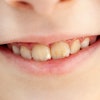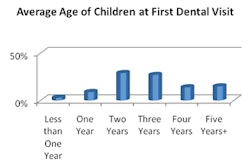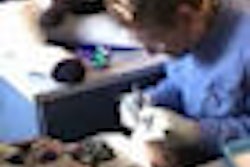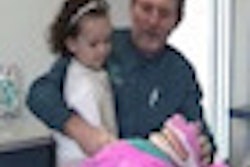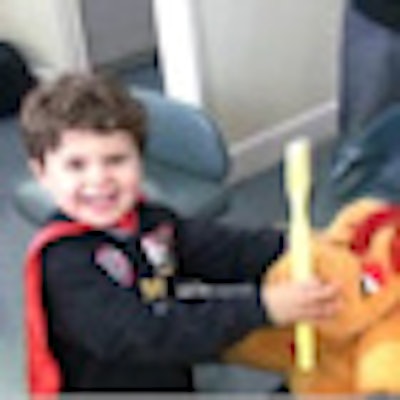
In a series of three articles and videos during February -- Children's Dental Health Month -- DrBicuspid.com is exploring what dental professionals can do to make early childhood visits pleasant and productive for patient and provider alike.
Even if they understand directions, toddlers often refuse to follow them. They squirm, cry, puke, and wet their pants during dental visits. What teeth they have will fall out no matter what you do. So it's no wonder that many dental professionals don't want to deal with them.
"The general practice community may find it very intimidating," said John Rutkauskas, D.D.S., CEO of the American Academy of Pediatric Dentistry (AAPD). The AAPD recommends that children see a dentist by the end of their first year or within six months of the eruption of their first tooth. But surveys suggest most kids aren't making it to the dentist that early.
What's stopping them?
The ADA supports the first-year or first-tooth recommendation, as does the American Association of Public Health Dentistry and the American Academy of Pediatrics.
One study of Medicaid children in North Carolina found that the earlier a child's first dental visit, the less likely the child was to need restorative or emergency dental visits over the next five years and the lower the cost of caring for the child's oral health during that time (Pediatrics, October 2004, Vol. 114:4, pp. e418-e423).
|
Leticia Mendoza-Sobel, D.D.S., demonstrates distraction techniques. |
| Having trouble viewing this clip? Click here to download the free Flash player. |
But the policy first promulgated by the AAPD in 2001 has yet to take hold. In September of 2009, only 36% (± 3%) of 914 of Americans with children younger than age 12 agreed with the first-year or first-tooth recommendation, according to a Delta Dental survey.
Previously some health organizations recommended a first dental visit by age 3. But most people aren't even following this recommendation. University of Iowa researchers writing in Pediatric Dentistry (January/February 2002, Vol. 24:1, pp. 64-68) reported that only 31% of children whose caregivers they surveyed had seen a dentist by age 3.
Other research suggests that children's fear is the biggest reason general dentists refer patients to pediatric specialists (International Journal of Paediatric Dentistry, November 2007, Vol. 17:6, pp. 407-418). So how can you ease that anxiety?
The distracting dentist
Practitioners who specialize in treating children make their practices welcoming by letting the kids and their parents know what to expect, said Brian Quo, D.D.S., M.A., a Palo Alto, CA, pediatric dentist. Some pediatric specialists even offer a dental appointment without an examination, just to make friends.
Dental practices can decorate walls with posters of cartoon characters and furnish the waiting room, or even the operatory, with child-sized furniture, books, and toys. All this can make the office feel more inviting and familiar to its youngest visitors.
During the appointment, pediatric experts employ three key techniques: distraction, praise, and "tell, show, do."
With distraction, the idea is to take the child's mind off a procedure that might feel uncomfortable or frightening. Some dentists now employ electronic entertainment by using such devices as iPods, Game Boys, video goggles, or TV screens.
But when the entertainment comes from a human being, it's more likely to build rapport. Distraction can be as simple as asking a child to find his or her belly button just before you inject an anesthetic, asking about the child's interests, or suggesting that the child count how many seconds a procedure is taking.
Leticia Mendoza-Sobel, D.D.S., a pediatric dentist in Piedmont, CA, and an assistant professor at the University of the Pacific Arthur A. Dugoni School of Dentistry, has made a name for herself by telling her patients stories, singing songs, and playing games.
The approach helps her as much as it does the patients. "I love children. They let me be myself and act silly," she said.
Next week: Perhaps the simplest, yet most powerful, technique for calming kids is "tell, show, do." The second article in this series will demonstrate how to make this approach work in your practice.
Copyright © 2010 DrBicuspid.com



